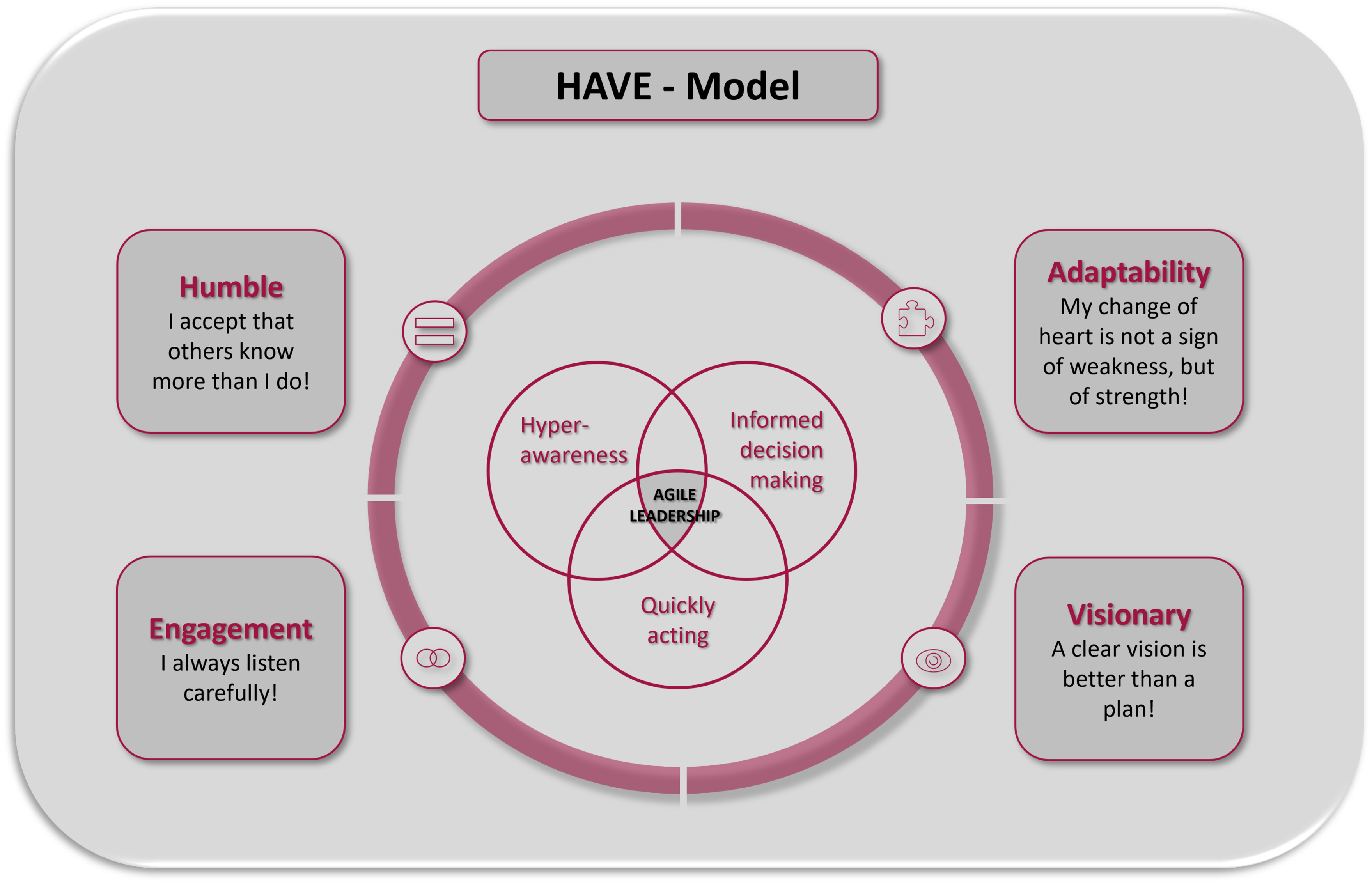Appearance
HAVE Model
- Subject
- Leadership
- Participants
- Agile Coach / Agile Master, stakeholders, managers, everyone who has a leadership role
- Facilitator
- Agile Coach / Agile Master

Summary
According to the agile behaviors, it is shown that the four HAVE competencies conceal modesty (Humble), adaptability (Adaptable), visionary (Visionary) and commitment (Engaged).
Definition
The four competencies form the framework on which an agile leader relies when he/she leads. They are to be considered in their interaction. If one component is insufficient, it cannot be compensated by the other components.
Agile leadership has to stand on four legs.
The HAVE model can be divided into two categories:
Modesty and Commitment (Humble and Engaged) represent the interpersonal components in agile leadership. Modesty is more related to inner demeanor and engagement to outer demeanor. The team feels the humility of the leader. The team, however, can visualize and hear a leader's commitment.
Adaptability and Visionary explain the task-related component of agile leadership. The decision creates a culture of togetherness and cooperation. It forms the basis for a focus on target achievement and the flexibility that an agile team needs to have to react to changes.
- Modesty opens the way for others to get the best out of themselves and others and thus to realize the potential of ideas and knowledge of employees.
- With commitment, he/she builds on the culture that an agile leader has created through his/her modesty. He/she leaves the "fixed" desk and seeks conversation and exchange with others. He/she notices which new trends are appearing, what are the issues that concern the market, customers and employees. At the same time he/she builds networks and includes their environment in his/her considerations.
- The speed of change and thus the disruption of a large number of business areas requires the ability to adapt. It is important to constantly realign yourself. The availability of real-time information changes yesterday's decisions. Adaptability here means changing one's mind, revising decisions. Leading agile means being responsive to changing circumstances.
- Thinking and acting in a visionary manner provides inspiration and orientation. The inspiring aspect of a vision creates energy and motivation. The orientation that the vision provides, directs this energy in the right direction and motivates people to achieve their goals and corporate goals.
Motivation
It becomes very clear why the inner attitude, mindset of a manager/leader is so essential.
Results
An Agile Coach or Agile Master who knows the four pillars that are fundamental for beeing an agile leader.
Benefit
Awareness how agile leadership shows in daily business.
Procedure
The HAVE model can be developed in the form of a 4-hour workshop. Initially, the coach describes what it is about and what the model contains and describes. Afterwards, the managers are brought together in small groups, where everyone should relate the four HAVE competencies to their everyday lives and describe when and how which of the competencies was used, depending on the situation. Afterwards, there will be a conversation with the entire group of participants, where a moderator from each small group will present representative situations (which were previously worked out by the participants).
Tools
Flipchart / whiteboard
Hints
The HAVE model may be applied not only for leader roles, it can be helpful for any other role, too.
See also
'Agiles Führen - Führungskompetenzen für die agile Transformation', Stefanie Puckett und Rainer M. Neubauer